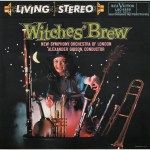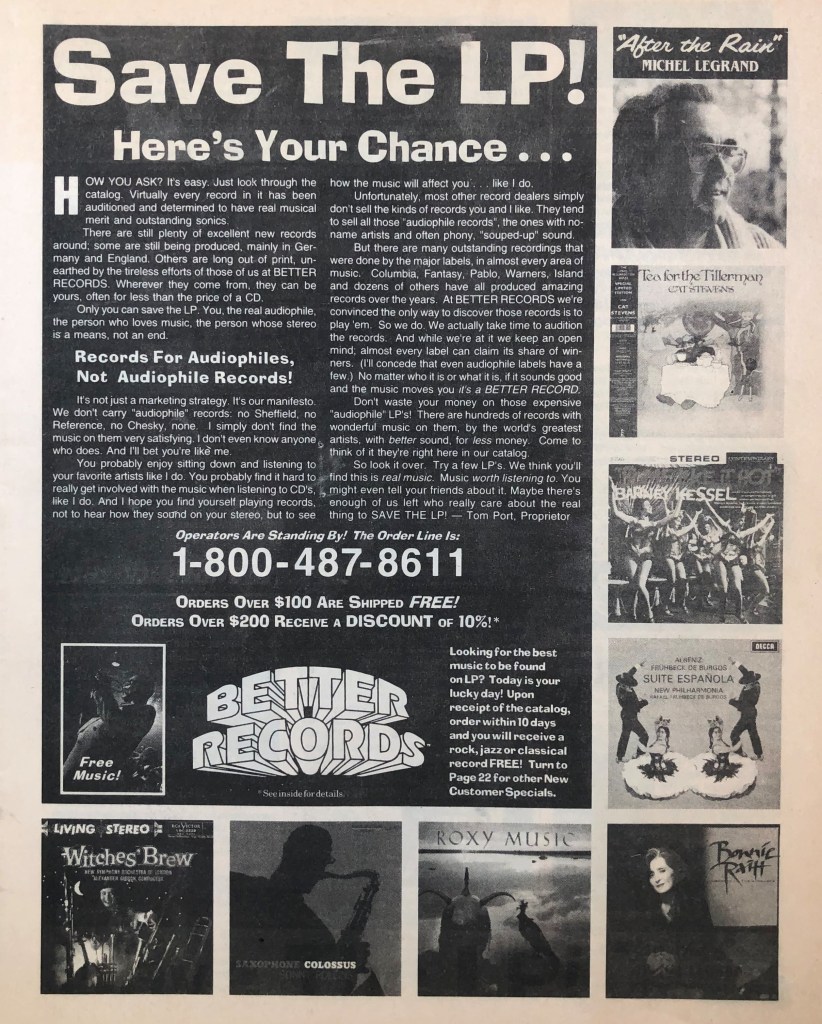 More of the music of Camille Saint-Saens (1835-1921)
More of the music of Camille Saint-Saens (1835-1921)
More of the music of Paul Dukas (1865-1935)
More of the music of Emmanual Chabrier (1841-1894)
Saint-Saens’ symphonic poem, Danse Macabre, the second piece on the second side, is the heart of the album and its raison d’être for us. This is where the real fireworks can be found, although that’s not really fair as there are fireworks aplenty on both sides.
What we have here is the best Danse Macabre we have ever played.
We have always been fans of Gibson’s performance on the legendary Witches’ Brew. As good as that recording may be, this one is clearly superior in practically every way — it’s bigger, clearer, richer, more resolving, more spacious, more real and, to my surprise, more EXCITING and involving.
If you own a copy of LSC 2225, hopefully not the awful Classic Heavy Vinyl pressing, you need to hear what Fremaux and the City of Birmingham Symphony Orchestra have accomplished on this wonderful 70s EMI.
Audiophiles (especially those of us with large dynamic speakers) have always been drawn to the biggest and most exciting orchestral spectaculars, and we have plenty on the site at all times to satisfy the need to hear these kinds of records at their properly-mastered, properly-pressed best.
Why spend money on another underperforming modern reissue that you will end up rarely playing when much more powerful and involving sound can be found on our site, sound so good it has the potential to change your life.
Four Exceptional Orchestral Showpieces
The Sorcerer’s Apprentice (Dukas)
This piece opens the side. There is depth and richness to beat the band, as well as clarity and tonal correctness that let you forget the recording and just enjoy the music.
A superb performance as well, as good as any we know of. And the sound is the equal of the best recordings we’ve played.
Espana. Rhapsody For Orchestra (Chabrier)
As good as Fremaux is, I think the Ansermet (CS 6438) might still have the edge, but both are so good that it might just come down to a matter of taste. You cannot go wrong with either.
And now we actually prefer the famous Argenta recording for Decca that’s on the TAS List, CS 6006.
Side One
Bolero (Ravel)
Comparable to our longtime favorite for sound and performance with Ansermet, we cannot say which one we would prefer without doing quite a bit more critical listening, a luxury we do not have at the moment.
We can tell you this: Turn it up and it really comes to life like LIVE MUSIC. It’s big, wide and believable.
This side one was far and away the best we played.
Prelude to the Afternoon of a Faun (Debussy)
Transparency, depth and space were superb on this side, allowing that “you are there” feeling to take hold in the mind. The best copies like this one had plenty of all three.
 Hot Stamper Pressings of Living Stereo Titles Available Now
Hot Stamper Pressings of Living Stereo Titles Available Now Even twenty years ago reviewers noted that tracks on compilations such as this often had better sound than the albums from which they were taken, proof that they were listening critically and comparing pressings.
Even twenty years ago reviewers noted that tracks on compilations such as this often had better sound than the albums from which they were taken, proof that they were listening critically and comparing pressings.





 Hot Stamper Living Stereo Classical and Orchestral Titles Available Now
Hot Stamper Living Stereo Classical and Orchestral Titles Available Now

